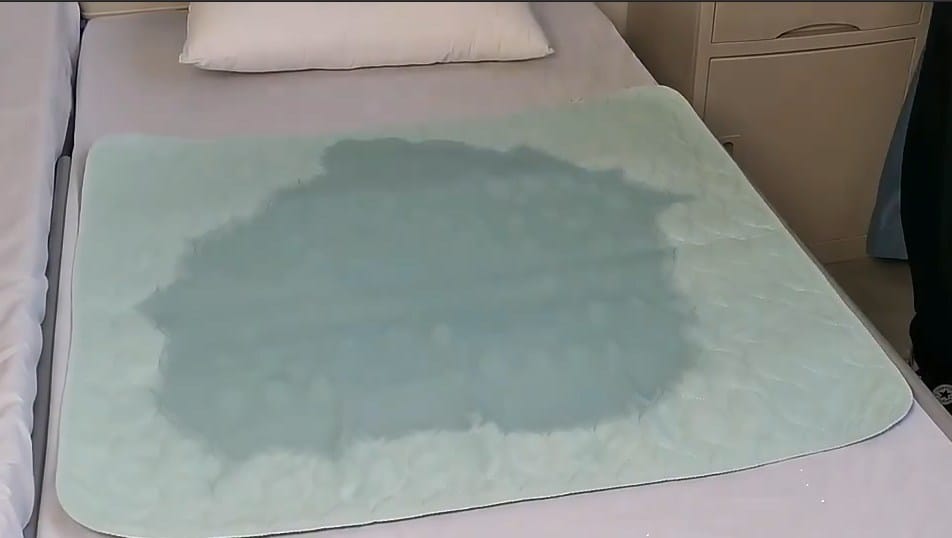Underpads are invaluable tools in healthcare and home care settings, primarily serving as a protective layer to manage incontinence, wound drainage, or other fluid-related issues. Their most obvious benefit is keeping beds, chairs, and other surfaces clean and dry. However, when used correctly, underpads also play a significant role in maintaining patient dignity. Understanding how to properly use underpads maximizes both their practical function and their contribution to compassionate care. This guide provides practical steps and tips for using underpads effectively to protect surfaces and uphold patient dignity.
1. Understanding the Dual Purpose of Underpads
Underpads serve two critical purposes:
- Surface Protection: Their absorbent core and waterproof backing create a barrier that prevents fluids from reaching and damaging mattresses, linens, furniture, and other surfaces. This reduces the burden of cleanup and extends the life of costly items.
- Maintaining Patient Dignity: By quickly absorbing and containing fluids, underpads help keep the patient drier and more comfortable. Prompt changes prevent prolonged exposure to wetness, which can be embarrassing and uncomfortable, thus preserving the patient’s dignity and promoting a sense of cleanliness and respect.
2. Choosing the Right Underpad for the Task
Selecting an appropriate underpad is the first step in proper usage. Consider:
- Absorbency Level: Choose a pad with sufficient absorbency for the expected volume of fluid. High-absorbency pads are better for overnight use or heavy incontinence.
- Size: Select a size that provides adequate coverage for the area that needs protection, considering how much the patient moves. It should be wide enough to catch fluid but not so large that it’s cumbersome.
- Material: Look for a soft top layer that is comfortable against the skin and promotes rapid wicking of moisture.
3. Step-by-Step Guide: Proper Placement and Usage
Effective use of an underpad involves correct placement and timely changes:
- Prepare the Area and Gather Supplies: Ensure the surface (bed, chair, etc.) is clean and ready. Gather your supplies: a fresh underpad, gloves, and potentially cleaning supplies if needed.
- Position the Patient: Explain to the patient what you are going to do. If placing on a bed, gently roll the patient onto their side, away from you.
- Correct Placement of the Underpad:
- Fold or roll the fresh underpad lengthwise.
- Place the folded portion against the patient’s back, positioning it so that when the patient rolls back, the underpad will be centered under the area where fluid is expected (most commonly under the buttocks and pelvic area for incontinence, or under a wound site).
- Gently roll the patient back over the folded portion of the underpad onto their other side.
- Pull the remaining folded portion of the underpad through and smooth it out completely. Ensure the underpad is flat, centered, and free of wrinkles, as wrinkles can cause pressure points on the skin.
- Securing the Underpad (Optional): Some underpads come with adhesive strips on the underside to help them stay in place, especially for restless patients. If using these, peel off the backing and adhere to the underlying sheet, being careful not to stick it to the patient’s skin. Avoid tucking excess underpad material tightly under the mattress, as this can create tension and contribute to pressure and shear on the patient’s skin.
- Ensure Patient Comfort: Once the underpad is in place, ensure the patient is comfortable and that the pad is smooth beneath them.
4. Tips for Enhancing Patient Dignity During Underpad Use
Using underpads isn’t just a task; it’s an opportunity to provide care respectfully:
- Maintain Privacy: Always maintain patient privacy during placement and changes by closing curtains or doors and using drapes or blankets appropriately.
- Communicate Clearly: Explain what you are doing every step of the way, even if the patient has cognitive impairments.
- Be Prompt with Changes: Check underpads regularly for wetness (e.g., every few hours, or as needed based on the patient’s condition). Promptly change soiled underpads to prevent prolonged exposure to moisture, which is crucial for both skin health and dignity. Lingering in a wet pad can be uncomfortable and embarrassing.
- Handle with Care: Perform placement and changes gently and efficiently to minimize discomfort or exposure time.
- Frame it Positively: Present the use of underpads as a tool for comfort, cleanliness, and protecting their bed, rather than solely focusing on incontinence.
5. Safe Removal and Disposal/Laundering
When changing a soiled underpad:
- Roll the patient to one side.
- Fold the soiled underpad in half lengthwise, rolling the soiled surface inwards.
- Gently roll the patient back over the folded pad onto the clean side of the bed (or onto a fresh underpad placed during the same process).
- Remove the soiled pad completely from the other side.
- Dispose of disposable pads in a designated waste receptacle. Place reusable pads in a designated laundry hamper for contaminated items.
- Perform hand hygiene immediately after.
6. Conclusion: Maximizing Benefits Through Proper Use
Underpads are essential for protecting beds and other surfaces in care environments. However, their full value is realized when they are used correctly and thoughtfully. By understanding how to properly choose, place, and change underpads, caregivers can ensure effective moisture management, reduce the burden of cleanup, and most importantly, uphold the dignity and comfort of the individuals they care for. Mastering the proper use of underpads is a simple step that significantly contributes to both practical caregiving efficiency and compassionate patient-centered care.

